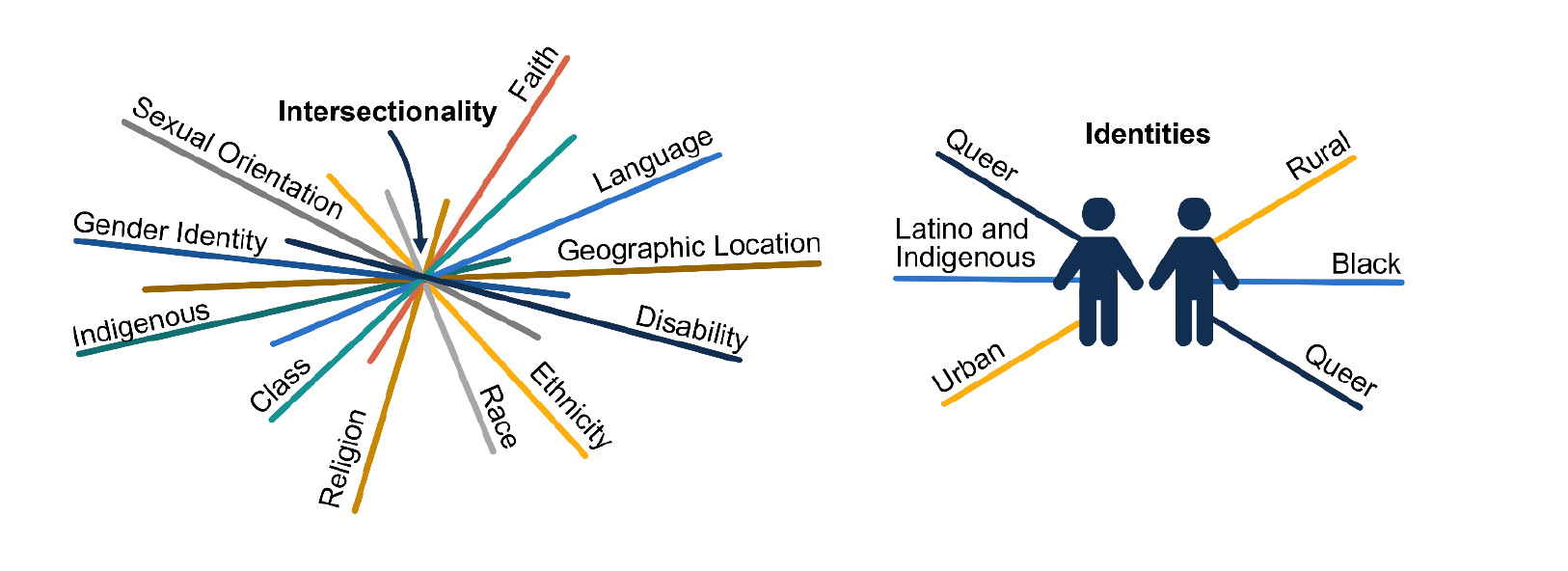- About
- Dental Public Health
- Join
- Attend
- Learn
- Lead
- Recognize
- Students
- Foundation
March EDI Corner - Advancing Equity by Incorporating IntersectionalityAn individual’s social identity may include different elements such as the commonly acknowledged variables of race and ethnicity, gender, socio-economic status, sexuality, nationality and citizenship status, and disability status. As dental public health professionals, we understand that these factors are associated with health status and access to care. However, the majority of oral health research continues to focus on particular elements affecting oral health and access to care without examining the interrelationship between different elements of an individual’s identity. Intersectionality, as defined below, is a lens for studying the social determinants of health, reducing health disparities, and promoting health equity and social justice (Lopez and Gadsden, 2016). What is “intersectionality”? Intersectionality is a theoretical research framework that acknowledges that people belong to more than one group and, consequently, may experience overlapping health and social inequities. Acknowledging the existence of multiple intersecting identities is an initial step in understanding the complexities of health disparities for populations from multiple historically oppressed groups. By incorporating intersectionality theory into oral health research and practice we promote a deeper understanding of the development of oral health inequities and advance population oral health. An intersectional public health lens embraces the heterogeneity of people’s lived experiences. The figures above are from “Advancing Equity by Incorporating Intersectionality in Research and Analysis,” by Mbah O, Sevak P, et al. Washington, District of Columbia: 2022. History of intersectionality The term was first coined in 1991 but its roots can be traced back to Black feminism in the U.S. as championed by Sojourner Truth’s “Ain’t I a Woman?” speech in 1851. She deconstructed the notion that race, ethnicity, and gender were mutually exclusive. In dental public health, we might consider intersections between identities such as:
Planning oral health research with an intersectional framework Intersectional theory is often found in conventional oral health research under the banner of inequality research. Numerous studies have examined connections between social identities and oral health inequalities, showing most disadvantaged members of society bear the greatest burden of poor oral health. However, these groups are continually theorized as homogenized collectives. Using both quantitative and qualitative data sources that include people with intersecting identities may lead to a deeper understanding of the contextual factors driving inequities. Strategies for incorporating intersectionality in oral health research include:
Adopting an intersectionality framework Intersectionality poses research questions that seek to understand the complex experiences of people, reflecting their lived realities, thereby overcoming the limitations of the mainstream simplistic single-variable oral health inequality research. Intersectionality research instead aims to unpack how multiple social identities simultaneously impact an individual’s oral health. Adopting an intersectional framework enables us to identify populations who are more likely to be a target of stigma, experience exclusion from dental services, likely to self-stigmatize, and disengage from services. Resources: |


